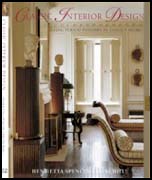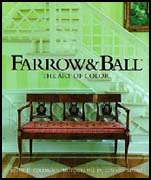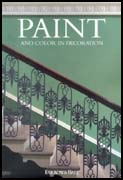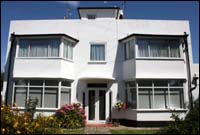|
Paint
|
||||||||||||||||||||||
|
It was the Romans who gave us purple, a pound of royal purple dye, required the crushing of four million mollusks. Cochineal red, discovered by the Aztecs, was made using the female cochineal beetle. A pound of water-soluble extract required about a million insects and it was the Spaniards who introduced the crimson colour to Europe in the 1500's. Later genuine Indian Yellow was produced from concentrated cows urine which was mixed with mud and transported to London for purifying, Sap Green from the Blackthorn berry and Sepia Brown from the dried ink sac of squid. Brenda Semanick
Georgian
Paint
Earlier and cheaper paints were made from Iron and red oxides and colours were limited to browns and murky greens. Wood work would have been painted with a dark brown or black oil based paint with a grain that resembled hard woods such as mahogany, oak or walnut. Later in the period, soft distempers or white washes were used on the plaster surface. Popular colours of greys, greens and pinks and woodwork was painted with a matt white finish. Cornices would have been painted the same colour as the walls. Paint techniques such as marbling were very fashionable as well as picking out the decorative details in the plaster work with gilt paint. Georgian style became lighter and brighter, simpler and more elegant, as the period progressed. Earlier colour schemes included burgundy, sage green and blue-grey, in sheened finishes similar to today's eggshell paints. Then came pea-green, sky-blue, soft greys, pinks, beiges and stone shades, in matt finishes. The Independent Georgian Colours 1Pea Green 2 Grey 3 Sienna Pink
Victorian Paint Due to the increase of mass production the demand for fashionable products rose. Most middle class families aspired to a lavish interior, especially in the reception and parlour areas in which they received their guests. Oil based paints continued to be used for wood work and metal. Wood work was still painted in dark colours to mimic hardwoods and that style did not change until the 1870's when the Queen Anne style preferred white woodwork. Walls were fashionably painted with strong reds and greens; this helped disguise the smoke and dirt caused by the fires in each room. These strong colours also provided a dramatic backdrop to all the decorative ornaments and gilded picture frames that were so popular at the time. Victorian Colours 1 Cadmium Red 2 Brunswick Green 3 Pugin Blue
Edwardian Paint Painting became easier as ready mixed paints became available in tins at the end of the 19th Century. The Edwardian fashion was to create light simple spaces. A need for cleanliness and more hygienic homes meant that decorative detail became simpler and colours became lighter. Due to wallpaper being very fashionable less rooms were painted but those that were, were painted in muted, lighter colours. Plain walls in one colour of pink, green or pale blue and finished with white woodwork and ceilings. Edwardian 1 Lemon Cream 2 Powder Blue 3 Salmon Pink
The Little Greene Paint Company 1773 Historic and Traditional Paint Colours
Links to Paint Articles The Georgian Group Guide: Paint Colour The Little Greene Paint Company 1773 On choosing paint by Colin Mitchell-Rose The Traditional Colour Range by Patrick Baty Jane Knapps Trompe L'Oeil Painting Paint colours and finishes: The Victorian Society Mr
Kerrison's Traditional Paint Guide for the Victorian Period Choosing Authentic Exterior Paint Colors by Mary McCarthy
Useful Research Websites English Architecture: Britain Express Looking at Buildings: Pevsner Architectural Guides
Forum Debates
|
||||||||||||||||||||||


 1
1 2
2 3
3 1
1 2
2 3
3 1
1 2
2




